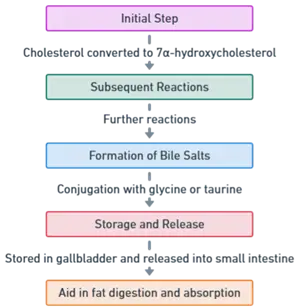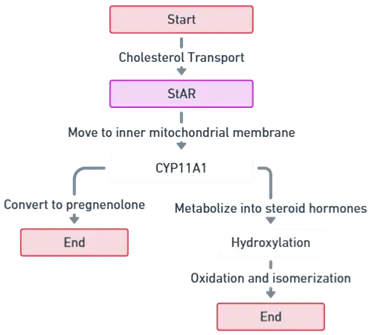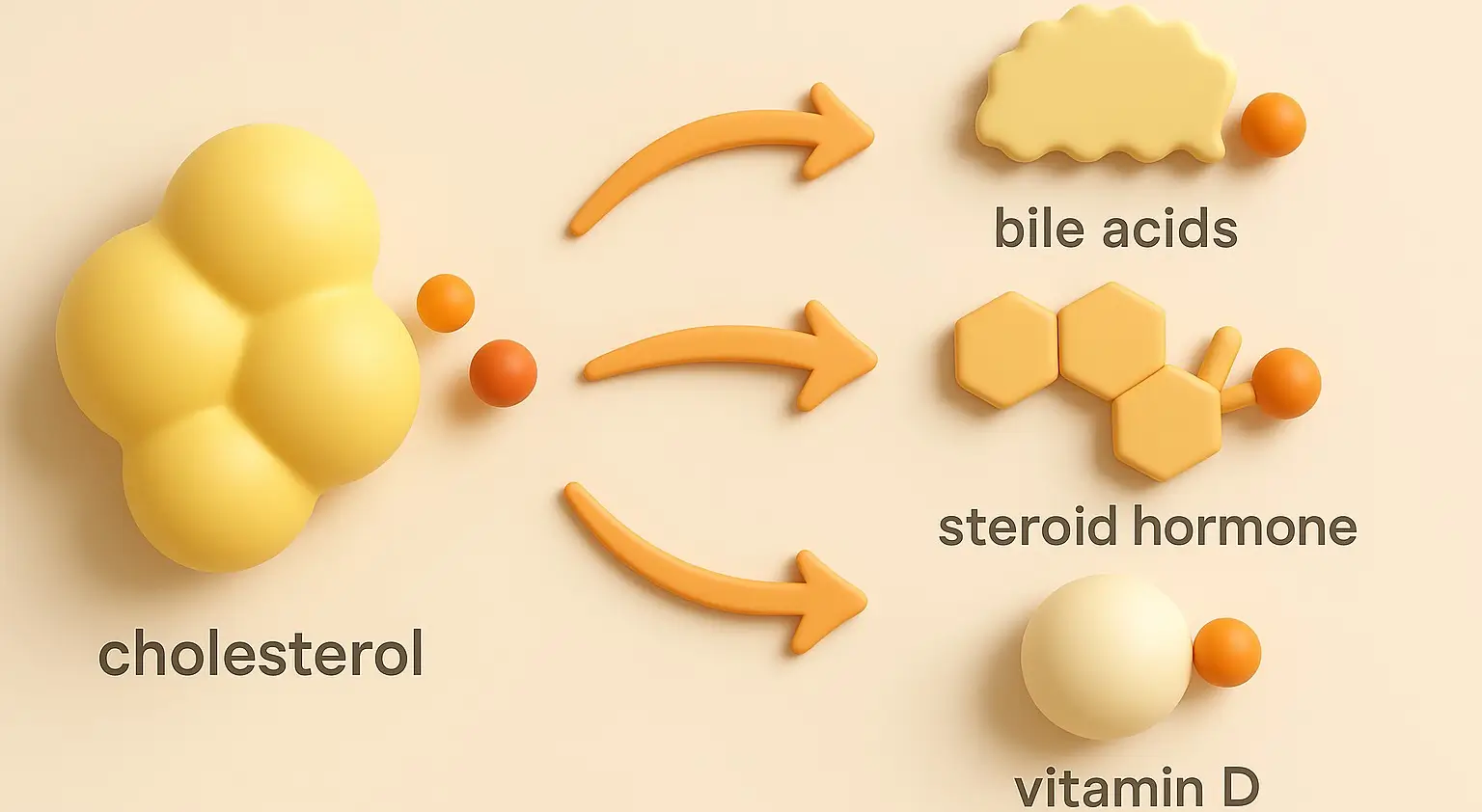- The conversion of cholesterol into bile acids, steroid hormones, and vitamin D refers to the biochemical transformation of cholesterol into essential molecules that play critical roles in digestion, endocrine function, and calcium homeostasis.
- These metabolic pathways occur in different tissues and are tightly regulated to maintain physiological balance.
Conversion of Cholesterol into Bile Acids:
Primary Location:
Steps Involved:
-
Initial Step:
- Cholesterol is converted to 7α-hydroxycholesterol by the enzyme cholesterol 7α-hydroxylase (CYP7A1), which is the rate-limiting step in bile acid synthesis.
-
Subsequent Reactions:
- Further hydroxylation, oxidation, and conjugation reactions lead to the production of cholic acid and chenodeoxycholic acid, the two primary bile acids.
-
Formation of Bile Salts:
- These bile acids are conjugated with either glycine or taurine, forming bile salts, which enhances their solubility and effectiveness in emulsifying dietary fats.
-
Storage and Release:
- Bile salts are stored in the gallbladder and released into the small intestine during digestion to aid in the digestion and absorption of fats.

Conversion of Cholesterol into Steroid Hormones:
- Primary Location: Steroidogenic cells in the adrenal cortex, gonads, and placenta.
Steps Involved:

-
Cholesterol Transport:
- Cholesterol is transported from the outer to the inner mitochondrial membrane by steroidogenic acute regulatory protein (StAR).
-
Initial Conversion:
- Cholesterol is converted into pregnenolone by the enzyme cytochrome P450 side-chain cleavage enzyme (CYP11A1 or P450scc). This is the rate-limiting step in steroid hormone synthesis.
-
Steroid Hormone Synthesis:
- Pregnenolone is then metabolized into various steroid hormones, including glucocorticoids, mineralocorticoids, and sex hormones (androgens, estrogens, progestogens) through a series of hydroxylation, oxidation, and isomerization reactions.
Conversion of Cholesterol into Vitamin D:
Process Overview:
- Involves processes in the skin, liver, and kidneys to produce active vitamin D.
Steps Involved:
-
Skin Reaction:
- In the skin, 7-dehydrocholesterol is converted to previtamin D3 upon exposure to UVB radiation. Previtamin D3 then spontaneously isomerizes to vitamin D3 (cholecalciferol).
-
Liver Conversion:
- In the liver, cholecalciferol is hydroxylated by the enzyme 25-hydroxylase (CYP2R1) to form 25-hydroxycholecalciferol (calcifediol).
-
Kidney Conversion:
- In the kidneys, calcifediol is further hydroxylated by 1α-hydroxylase (CYP27B1) to produce the biologically active form, 1,25-dihydroxycholecalciferol (calcitriol).
-
Role of Calcitriol:
- Calcitriol plays a crucial role in regulating calcium and phosphate homeostasis. It enhances the absorption of calcium and phosphate from the intestines and promotes bone health by regulating their levels in the blood.

